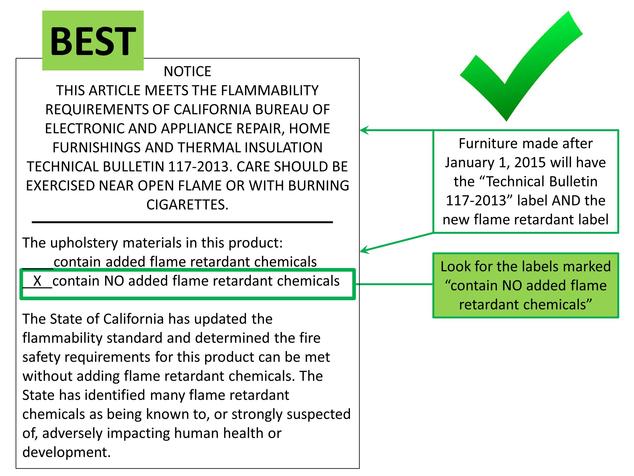It’s not a very sexy subject. Flame retardants that is…but for as much as I care about harmful chemicals in beauty products, I’m even more passionate about this class of chemicals.
So what are flame retardants and don’t they keep us safe?
Flame retardants sound like a good thing, but they are not. Considered by scientists as “the new lead”, this class of chemicals is used by the pound to treat our couches, mattresses and some upholstery. The chemical industry would have you believe that these chemicals help slow the spread of household fires, but after decades of use and widespread testing, the chemicals don’t actually work.
Why did companies start to use toxic flame retardants?
Now this is a good story. There was a large issue in the 1960s and 70s with household fires that started from unattended cigarettes. The proposal at the time was to create cigarettes that naturally extinguished if someone wasn’t smoking them. The tobacco industry didn’t like that idea since the chemicals they used to keep the cigarette burning meant that people went through cigarettes quicker and therefore bought more.
Enter the chemical industry.
They offered a “solution” and said, let us use these chemicals in furniture so the tobacco industry doesn’t need to sell less cigarettes.
They collectively lobbied the California legislature to require all furniture to be treated with flame retardant chemicals and a bill was passed. This transformed the entire furniture industry and so began four decades of exposure to every American family to flame retardants. This entire story was well researched and documented in a multi-series expose in the Chicago Tribune.
Yikes. So how bad are these chemicals?
Well, let me put it this way, as a longtime environmental health campaigner I’m more concerned about flame retardant exposure than any other chemical. Decades worth of science shows that these chemicals, at the levels in which we are exposed in our homes through our furniture, can be linked to harming the brain irreversibly, hormone disruption, kidney and liver damage, and certain types of cancer. For the latest science on flame retardants you can visit the research organization Green Science Policy Institute‘s website!
Flame retardants don’t leave our bodies.
These chemicals are persistent in the environment which means they stay in our bodies (stored in our fat). Unlike chemicals like BPA, which leave your body every 24 hours, flame retardants don’t leave.
Tell me something good.
Years of work by my colleagues and I has led to state level bans on these chemicals and major market shifts. If you have purchased a chair or couch in the last three years, there will be a tag under the piece of furniture which indicates if the product was treated with flame retardants. Prior to this right to know law being passed, we had no way of shopping for flame retardant free furniture.
How can I tell if my furniture is flame retardant free?
Look for this label if you’re purchasing new furniture (prior to three years ago, this label won’t appear). If your couch is more that three years old, it likely has several different types of flame retardants.

What companies make flame retardant free furniture?
Check out my blog featuring the top companies who sell varied styles and price ranges.
If something says it meets California flammability requirements, does that mean it was treated with flame retardants?
No. For furniture read the tag to see if the product was treated. For children’s pajamas and mattresses call the manufacturer.
If I have an old couch should I get rid of it?
If you can afford a new couch, yes, it’s worth the investment. If you recently bought a couch, call the manufacturer and return it if it was treated. You have the right to a refund for being sold a poisonous product!
Never miss a post and join my mailing list!



